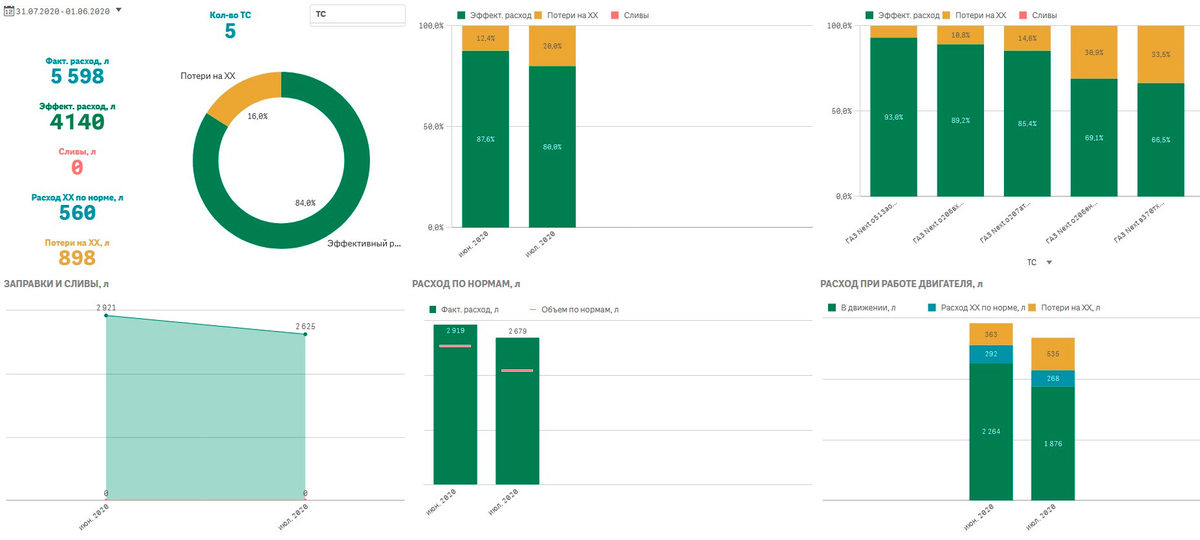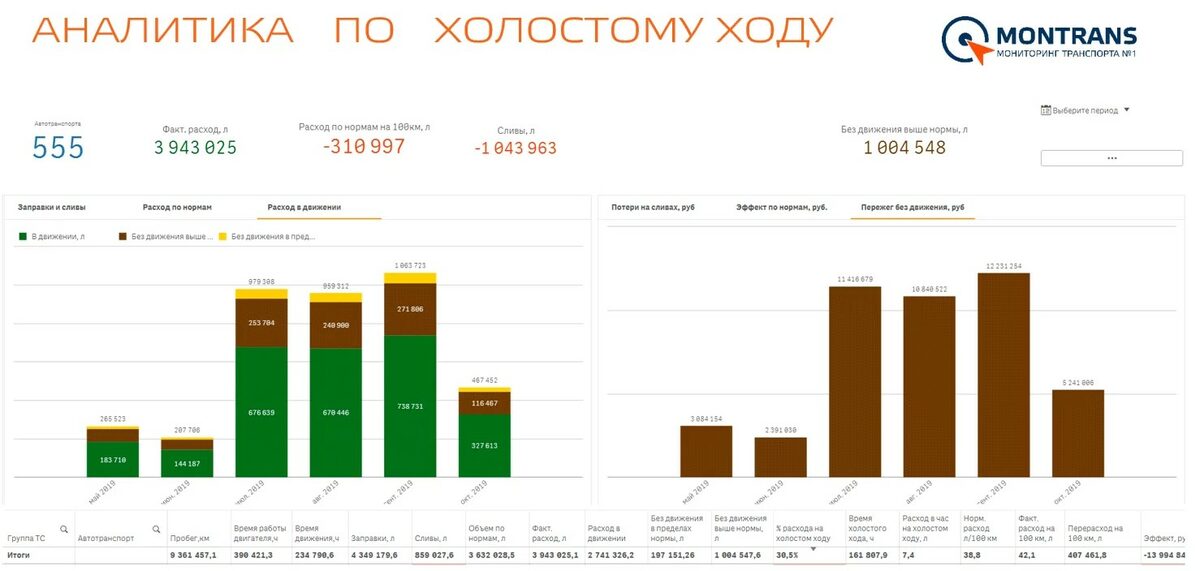IT technologies have fundamentally changed the transportation industry. Digitalization and automation of transport makes transportation safer and business more profitable
The digital revolution in the transportation sector is moving forward at a breakneck pace. Even the worst quarantine year in the industry's history in a long time, 2020, could not stop it, and even pushed it even further. The world is going digital and vehicle monitoring is more relevant than ever. Automakers, service and technology companies in the transport sector are focusing on optimizing production and reducing financial costs. Accordingly, the digitalization of transport in Russia plays a paramount role.
Digital transport services optimize routes, build logistics chains, monitor driver behavior and the environment around the vehicle, monitor the technical condition of vehicles, and control drones. Manufacturing is becoming flexible, fast, informative, controllable and evolving. And if a company has already moved to the cloud, it is unlikely that management will want to come down to earth
The long-term strategy for the development of Russia's transportation industry approved by the Government (until 2030 with a forecast for the period until 2035) envisages the active introduction of digital technologies in the transportation industry.
Namely:
- Increasing the level of technological development of the road transport enterprise, including the level of digitalization of passenger and freight transportation, in order to reduce costs, improve the reliability, safety of infrastructure and vehicles, as well as the environmental friendliness of the transport complex;
- development of digital solutions for interaction with customers and their information support;
- increasing the penetration of digital technologies throughout the entire life cycle of transport infrastructure and vehicles;
- increasing the level of digitalization in the organization of transport complex management.
Namely:
- Increasing the level of technological development of the road transport enterprise, including the level of digitalization of passenger and freight transportation, in order to reduce costs, improve the reliability, safety of infrastructure and vehicles, as well as the environmental friendliness of the transport complex;
- development of digital solutions for interaction with customers and their information support;
- increasing the penetration of digital technologies throughout the entire life cycle of transport infrastructure and vehicles;
- increasing the level of digitalization in the organization of transport complex management.
In the Coronacrisis, the survivors were those who were able to integrate cloud technology into their businesses. Once in the "sky", companies have gained flexibility, speed, informativeness and the ability to grow exponentially. For example, MONTRANS is confident that those who have entered the cloud service will not want to come back down to earth. Effective fleet management largely depends on the successful digitalization of transport, transformation of the company, introduction of new technologies and automation of business processes.
Cloud technologies are penetrating deeper into our lives every day. We regularly subscribe to streaming services, store personal files in the cloud, ride home on Uber, use carsharing, and communicate with our home kettle, vacuum cleaner, and multicooker from a distance. According to the analytical agency TMT Consulting, in 2019 the volume of the Russian market of public cloud services reached 73 billion rubles. In 2020, against the background of crisis changes in the economy, the Russian market volume grew by 27% and amounted to 93 billion. According to forecasts, by 2024, the market will increase more than 2.5 times and reach 198 billion.
Cloud technologies are penetrating deeper into our lives every day. We regularly subscribe to streaming services, store personal files in the cloud, ride home on Uber, use carsharing, and communicate with our home kettle, vacuum cleaner, and multicooker from a distance. According to the analytical agency TMT Consulting, in 2019 the volume of the Russian market of public cloud services reached 73 billion rubles. In 2020, against the background of crisis changes in the economy, the Russian market volume grew by 27% and amounted to 93 billion. According to forecasts, by 2024, the market will increase more than 2.5 times and reach 198 billion.
Dmitry Zhuravlev Head of Analytical Center of Montrans (Moscow): "Modern transport monitoring is a powerful computing complex in the data center, technical support service and service engineers in the fields. Telematics functions include: collection of information from mobile and stationary objects, processing and visualization of data on location and parameters for operational control, driver's mobile application for receiving tasks and mechanic's application for receiving alerts and reports. MONTRANS.ONLINE services for department managers and MONTRANS.ANALYTICS for owners.
The company's management can monitor equipment operation in real time, as well as receive the final key performance indicators of the fleet without waiting for the accounting department to close the periods. All processes received from telemetry are compared and processed with data in the company's accounting systems: 1C, SAP "on the fly" in the fleet management program. The accounting department does not reconcile paper documents and telemetry data, but works with the ready data received from the impartial controller system".
In order for a fleet to become digital, efficient and provide data for analyzing vehicle usage without human intervention, it is necessary to integrate the collected indicators with accounting systems and services of insurance and contracting companies, State Services and bring it all together in big data, the so-called "data lake". In car fleets, employees do not have such competencies, so the configuration and launch of the IT solution should be in the hands of specialists.
The fleet ecosystem is one of the fastest growing areas of business. However, for many fleet managers, vehicle control is still limited to obtaining data on fuel consumption and vehicle location. Sharing economy and big data services have fundamentally changed the perception of transportation sector management. Today, a business owner does not need to know how much petrol a particular vehicle has consumed. The manager receives fleet analysis in the form of final reports on the work of the entire fleet, which allows him to see weaknesses and allocate resources in the right direction.
The latest know-how is a comprehensive fleet management system. The MONTRANS.ONLINE platform is a kind of "Digital Fleet Management Center" on one monitor. The user has basic modules integrated in the web-interface: truck monitoring, fuel balance, safe driving, trip tickets, inventory and directories, repair and driver management, exchange of requests with contractors and service. A supervisor or dispatcher monitors events in real time. In addition, you can get analytical reports on fleet performance for any selected period of time.

The highlight of the IT solution is the manager's interface, which collects final data in the form of a dashboard (graphs and tables) with calculations of various coefficients for managers, economists and business owners. There are no such programs on the telematics market now, especially with a mobile application for personnel. Integration of the intelligent fleet management system will take about a month, and in another month the fleet management will see a significant economic effect and full digitalization of transport.
Dmitry Zhuravlev Head of Analytical Center of Montrans (Moscow): "Big data and cloud technologies help businesses to look into the future and choose the optimal solution for their development. But it often happens that telematics in the hands of Russian users turns into a set of hardware. This is accompanied by driver dissatisfaction, increased staff of controllers and unforeseen expenses. The use of equipment for data collection, as well as the monitoring processing program, are only tools. Managers of enterprises, often, due to lack of experience and lack of time, emphasize the price of equipment and subscription service. As a result, the cheapest hardware with questionable service is purchased. It turns out that the monitoring data start to live their own life, employees get used to working with new controllers, and the accounting department continues to summarize paper reports and manually process trip tickets. Bottom line: there are costs, but no efficiency.
For example, the company MIP-Stroy No. 1 is engaged in the construction of the capital's subway. In 2021, the company carried out digitalization of its vehicle fleet. The cloud service MONTRANS.ANALYTICS was integrated into the management system.
Stanislav Simakov senior dispatcher of mechanization department "MIP-Stroy No. 1": In just 3 months after the implementation of the monitoring and analytics system, we saw that the efficiency of our own equipment increased by 15%. We started to use rented vehicles less. The number decreased from 100 to 76 units. Telematics helped us to identify underfilling at gas stations and tapping into the return fuel line. Based on the analytical data, we adjusted fuel rates. The savings amounted to 27%
For a company to become digital and efficient, it is necessary to integrate telematics indicators with accounting systems, with the services of contractors, insurance and other organizations, with government services, and bring it all together in a single cloud service. As a rule, employees of road transport companies do not have such a set of competencies, so integration, configuration and launch of analytics systems should be carried out by trained specialists.
As a result, the customer gets a kind of "Flight Control Center" on one monitor. All major modules are integrated in one interface: transportation monitoring, fuel balance, electronic trip tickets, safe driving, management of technical services, drivers and much more.
As a result, the customer gets a kind of "Flight Control Center" on one monitor. All major modules are integrated in one interface: transportation monitoring, fuel balance, electronic trip tickets, safe driving, management of technical services, drivers and much more.

The organization's management monitors the operation of the entire fleet in real time, and all collected parameters and event data are stored on the server. For example, the highlight of MONTRANS.ANALYTICS is a special module for fleet owners. The interface collects summary indicators in the form of tables and graphs. Based on these dashboards (dashbord - dashboard), the business owner can make decisions that will be of key importance for the successful operation of the enterprise. There are no such IT developments on the Russian transportation monitoring market yet. The practice of the last two years shows that the implementation of a cloud-based management system for a motor transport organization takes about a month. And already in 2-3 months of operation the fleet accounting department records the economic effect obtained. According to companies that already use these programs, investments in digitalization pay for themselves within six months.
For companies that want to organize full control over fleet operation, there is no need to install their own servers. MONTRANS offers a ready-made solution. MONTRANS.DATA platform ensures correct operation of IT-systems on which the business operates. Big data is also called "new oil" or "new electricity" and is equated with the fourth technological revolution. For example, today, in order to provide a house with electricity, no one calculates how many kW you need to buy years in advance. Consumers simply pay each month at the meter. Similarly, cloud technologies provide exactly the amount of resources that a business needs today. And in case of growth, the company can always buy "electricity".
Анализ автопарка и Цифровизация автопарка - это будущее транспортных компаний!
